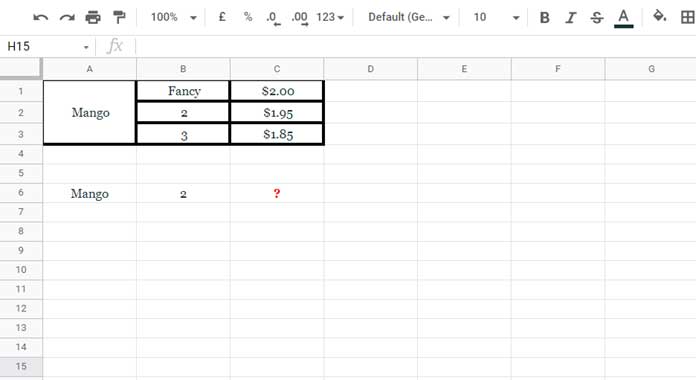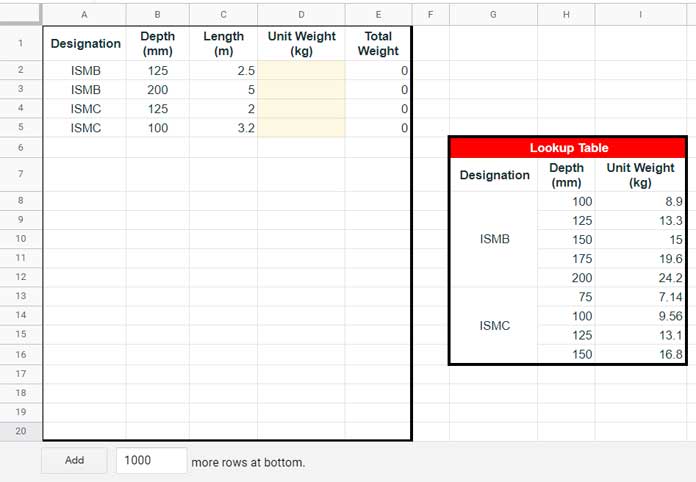Does VLOOKUP work with merged cells in Google Sheets?
Technically, yes. But it returns unexpected results if the lookup column contains merged cells. To fix this, you’ll need a formula that treats merged cells as if they were filled down.
In this tutorial, I’ll show how to use VLOOKUP with merged cells using two practical examples—so you always get the correct match, even from irregularly formatted tables.
Why VLOOKUP Fails with Merged Cells
When the lookup column has merged cells (like A1:A3 merged as “Mango”), VLOOKUP only matches the first row of the merged range. So =VLOOKUP("Mango", A1:C3, 3, 0) always returns the value from row 1—even if you want the price of Mango Grade 2 in row 3.
The Correct Way: Fill Down Merged Cells Virtually
To fix this, we’ll fill down merged cells virtually inside the formula, then combine that with other relevant columns before using VLOOKUP.
Example 1: Merged Item Column with Multiple Grades and Prices
Table:

Goal: Get the price of Mango, Grade 2.
Search values:
- A6 =
Mango - B6 =
2
Formula:
=ARRAYFORMULA(
VLOOKUP(
A6&B6,
HSTACK(LOOKUP(ROW(A1:A3), IF(LEN(A1:A3), ROW(A1:A3)), A1:A3)&B1:B3, C1:C3),
2,
FALSE
)
)How It Works:
LOOKUP(...)fills the merged cell values (like “Mango”) down to each row.- Combines
Item & Gradeto create a unique search key. - Then returns the corresponding value from the
Pricecolumn.
Example 2: Lookup Structural Steel Weights from a Table with Merged Rows
Table in G8:I16:

Goal: From a sheet with:
- A2:A = Type (e.g., ISMB, ISMC)
- B2:B = Size (e.g., 125, 100)
…return the correct unit weight from the lookup table.
Formula (for cell D2):
=ARRAYFORMULA(
VLOOKUP(
A2&B2,
HSTACK(LOOKUP(ROW($G$8:$G$16), IF(LEN($G$8:$G$16), ROW($G$8:$G$16)), $G$8:$G$16)&$H$8:$H$16, $I$8:$I$16),
2,
FALSE
)
)
You can drag this down or convert it to a full array formula:
Full Column Array Formula:
=ARRAYFORMULA(
IFNA(
VLOOKUP(
A2:A&B2:B,
HSTACK(LOOKUP(ROW($G$8:$G$16), IF(LEN($G$8:$G$16), ROW($G$8:$G$16)), $G$8:$G$16)&$H$8:$H$16, $I$8:$I$16),
2,
FALSE
)
)
)Key Takeaways
- VLOOKUP fails in merged cells because it only reads the first row.
- Use
LOOKUP(ROW(), IF(LEN()), ROW(), range)to fill merged cells virtually. - Combine filled values with other columns to form a composite lookup key.
- Wrap in
ARRAYFORMULAto apply across multiple rows.




















